Domenico Scarlatti - Sonata K. 184
José Rodríguez Alvira
This sonata is in binary form. Section A begins in F minor, modulates to A flat major, and ends in C minor. Section B visits the keys of E flat major, C minor, and B flat minor before ending in F minor.

Section A, first measures
The first eight measures serve as an introduction. We see the influence of Andalusian music with the use and variations of the Phrygian or Andalusian cadence (Scarlatti lived most of his life in Spain and Portugal). The cadence appears in its original form in measures 3 and 4 (i-VII-VI-VI-V):

PAVEL PETROV, piano
Phrygian or Andalusian cadence:

Phrygian mode related to F minor:

This cadence is called Phrygian because it rests on the note that is the tonic of the related Phrygian mode. In Andalusian music, this note has a tonic function, and it is commonly harmonized with a major chord.
Note how the descending scale pattern is used with variations in measures 1 and 2 and 4 to 8:

Measures 9 to 22
Scarlatti modulates to A flat major, the relative major of F minor. The passage presents the musical idea that we will identify as motive A:

PAVEL PETROV, piano
Two aspects of this passage suggest influence from Andalusian music:
- The repeated chords in the left hand imitate the guitar accompaniment style in Andalusian music.
- The insistent repetition of the same musical idea.
Measures 22 to 28
The motive B appears in measures 22 to 23 and is repeated in measures 24-25 and 26-27. The entire passage is in A flat major:

PAVEL PETROV, piano
Measures 29 to 34
The motive C appears in measures 29 to 34 and is repeated twice:
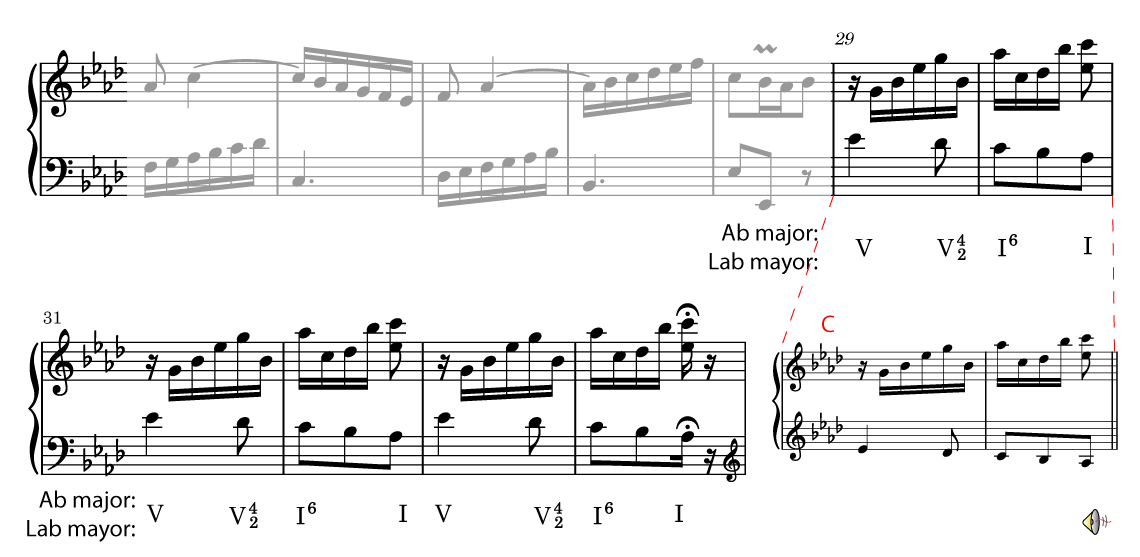
PAVEL PETROV, piano
Measures 35 to 48
The motive D appears in measures 35 to 46. A chromatic passage takes us from A flat major to C minor. Scarlatti varies this cycle of fifths to modulate to C minor:

How do Scarlatti's chromatic chords relate to this progression?
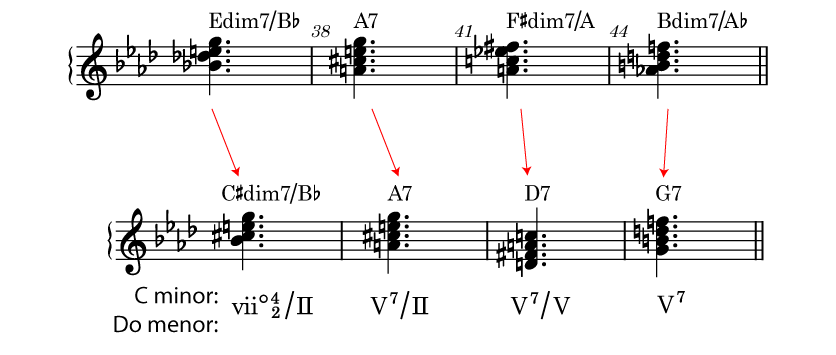
- The diminished E seventh chord (E - G - Bb - Db), the seventh degree of F minor, is interpreted enharmonically as the seventh degree of D (C# - E - G - Bb).
- In measure 38, the B flat moves to A, and the chord becomes the dominant of D (A).
- In measure 41, the expected G (dominant of D) chord is replaced by a diminished F# chord, vii degree of G (both chords have a dominant function).
- In measure 44, the expected C (dominant of G) chord is replaced by a B diminished chord, vii degree of C.
Here is the complete passage:
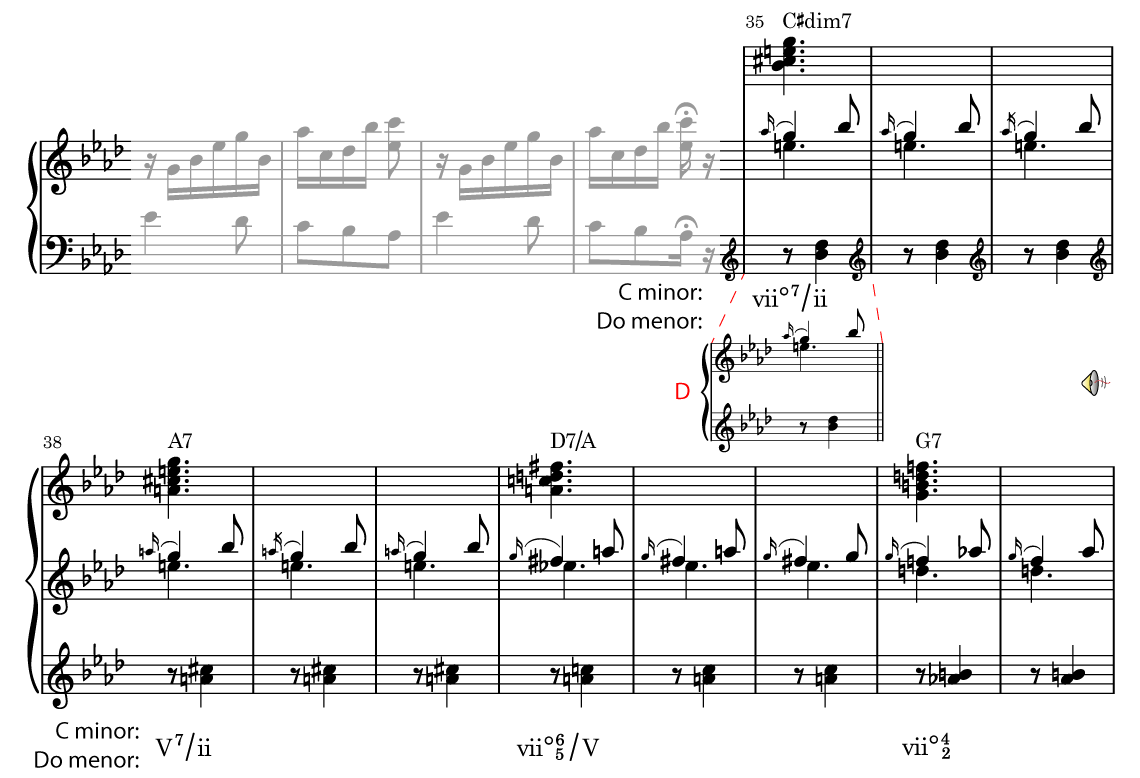
PAVEL PETROV, piano
Measures 49 to 61
The motive E appears, and it is repeated several times:
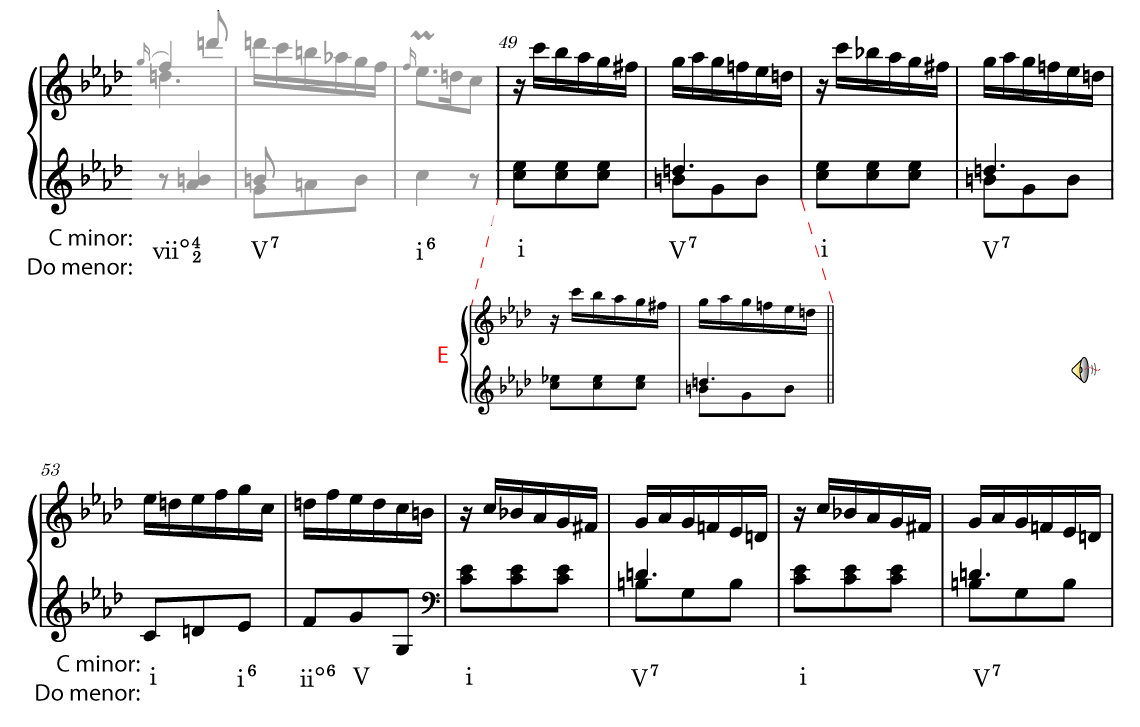
PAVEL PETROV, piano
Measures 61 to 77
In the final measures of this section, motive D reappears, and a new motive F is presented. It ends the A section in C minor with variations of E:
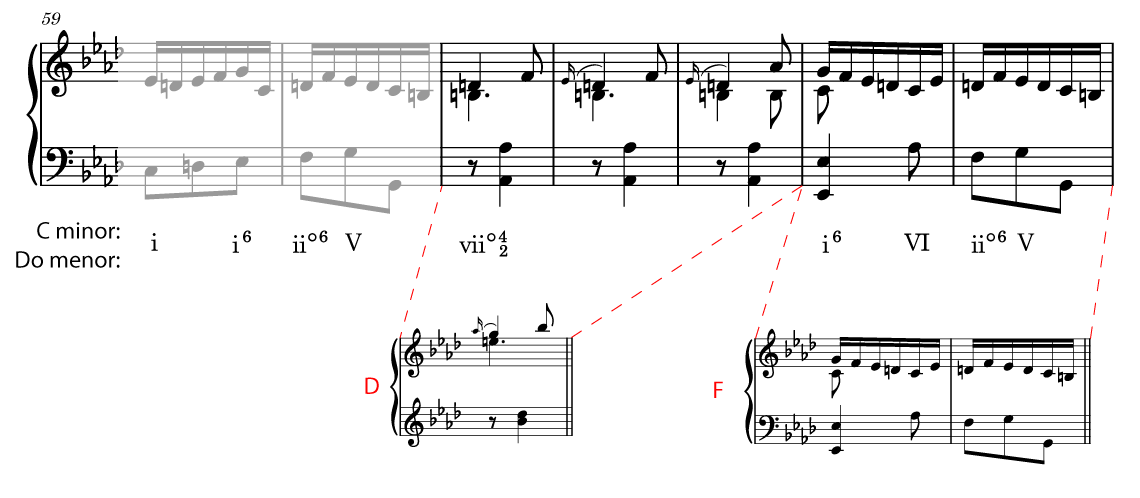

PAVEL PETROV, piano

Section B, first measures
We start with an F minor's dominant chord using a variation of motive A. The process is repeated starting on E flat major from measure 84 and C minor in measure 90:

PAVEL PETROV, piano
Measures 94 to 101
From measure 98 on, it would seem that the dominant of C would affirm that key, but in reality, it is used to resolve to a dominant of the dominant of B flat minor. The dominant of that key resolves to a tonic in measure 101:

PAVEL PETROV, piano
Measures 102 to 116
The passage uses motive A. From B flat minor, using the v degree (minor) as a common chord, we return to F minor in measure 106:

PAVEL PETROV, piano
Measures 117 to 131
The D motive reappears. This time - despite the chromaticism - we remain in the key of F minor, which is reaffirmed in measure 131. Note that the chord in measure 118 can be reinterpreted enharmonically as the vii degree of the ii degree (F#-A-C-Eb):
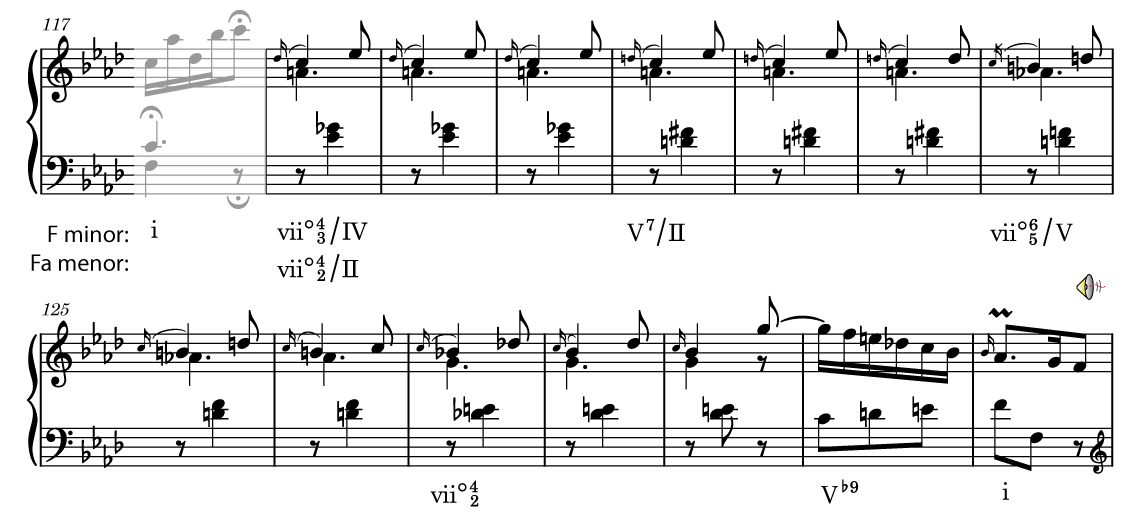
PAVEL PETROV, piano
Final Measures
The E motif reappears:

PAVEL PETROV, piano
Followed by motives D and F to conclude:

PAVEL PETROV, piano
Sonata K. 184
PAVEL PETROV, piano

This work is licensed under a Creative Commons Attribution-NonCommercial-NoDerivatives 4.0 International License. José Rodríguez Alvira.
Published by teoria.com